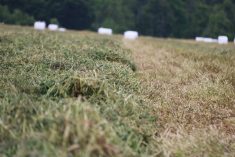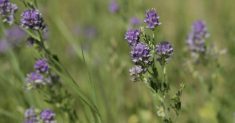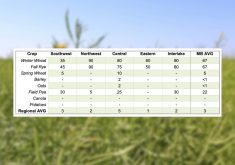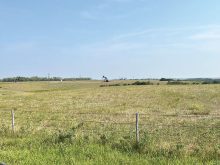For the first time in a long time, there’s hay in the field and lots of it. The problem has been getting to it.
Tyler Fulton, president of Manitoba Beef Producers, says yields are some of the best he’s seen, but moisture has been a serious issue for putting up dry hay.
“We’re struggling,” he said, adding that his area near Birtle, Man., has rarely seen more than three consecutive days without rain in recent weeks.
Read Also
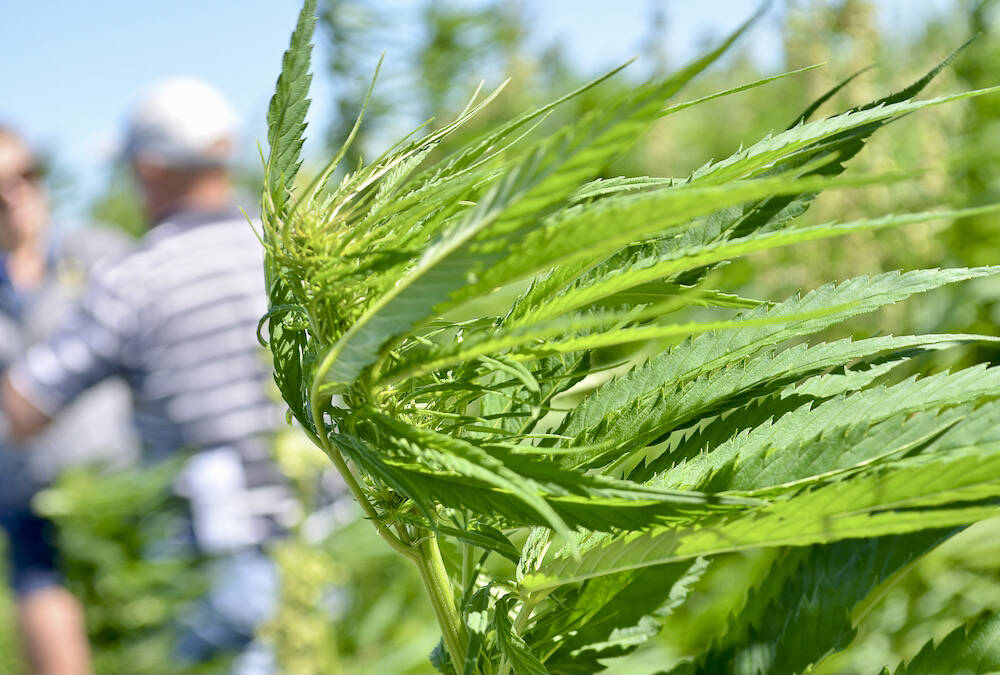
Canadian hemp stable, but stuck on growth
Canada’s hemp industry hopes hybrid varieties, better yields, clearer regulations and new markets can help the crop break past its ceiling and get Canadian farmers planting more hemp acres.
“The stuff that we have put up has been rained on two to three times – very poor quality. And, exacerbating that, it’s a heavy crop. There’s a lot there, so it’s not drying down as quickly as we have typically seen.”
Why it matters: Manitoba’s livestock sectors need to rebuild feed inventories after last year and a string of tight feed years before that exhausted reserves.
It’s a very different problem compared to the dire feed situation last summer.
Manitoba, and specifically the Interlake, formed the nexus of 2021’s drought in Western Canada. Livestock flowed out of stricken regions as producers were forced to market animals they could not feed. Pastures browned and hay harvests were critically short.
“They’ve really come back,” Fulton said. “It was remarkable that they recovered as quickly from the drought as what we’ve seen, by virtue of the fact that we’ve seen such steady rains.”
Pastures have also seen a resurgence, he added, although some drowned or were inaccessible after spring flooding.
According to a July 26 provincial crop report, over half of first cuts were complete, but haying was far from over. Producers in some areas limited harvest to high ground due to excess moisture.
Hay that is coming off, however, is coming off in spades. Manitoba Agriculture estimates yields at two to three tonnes per acre, with each acre in newer, more managed fields yielding as high as 4.5 tonnes.
“When you look at July, we’ve had 12 days of rain out of 31, so it’s pretty well every other day that we’re getting rain,” said John McGregor, extension support with the Manitoba Forage and Grassland Association (MFGA).

While some producers found a window to put up dry hay, McGregor said, a not insignificant amount is still waiting in the field and decreasing in quality with every rain.
Manitoba’s dairy sector echoed those points. Dairy Farmers of Manitoba chair David Wiens said his first cut began in the second week of June after a slow start.
“The volume is there,” he said. “I think there is a good amount of quality hay that was put together in terms of silage and silage bales, but obviously there’s been some losses too, where they just haven’t been able to work around the weather very well.”
Opting to ensile
Harvest challenges have made silage a popular choice. Fulton opted for that on his own farm.
“Not all of our production. Usually we go and get a custom chopper in when we can do some cereals and we put a bit of alfalfa into the pit as well, but given the conditions and the lack of progress that we were making on dry hay, we just decided we had to get ahead of this and get some decent quality stuff in, in some form.”
Ensiling the first cut is already common for dairy farms.
“That gives a lot more flexibility in terms of getting good quality feed together during even some more difficult times,” Wiens said.
He estimated that almost a third of producers who planned to put up dry hay instead opted to ensile, “and that went into second cut.”
Other fields originally destined for hay have become “heifer feed” after being rained on, he added.
Market update
The hay market is in its lag period, with most livestock on pasture.
The MFGA noted price slides earlier this year, when cattle producers struggled to balance a delayed turnout – underpinned by soggy and cool conditions and the aftermath of drought – with sharply dwindling feed supplies.
Alfalfa hay for August was expected to come in at around 11 cents per pound, similar to its March level, although alfalfa-grass mixes were expected to drop to 6.5 to 12 cents.
In March, mixed hay ranged between 10 and 14 cents per pound for good quality and eight to 12.5 cents a pound for beef-quality bales. Grasses likewise were expected to drop from seven to nine cents a pound earlier in 2022 to four to nine cents.
McGregor noted that price range has dropped to pre-drought levels and now reflects what the industry saw from 2018 to 2020. Those years also brought concern over hay prices at the time, when Manitoba’s multi-year dry spell got into full swing. The 2019 season, in particular, resulted in feed shortages in dry areas but not the major shortfalls of last year.
“It’s kind of the same price that we saw in those years when we had hay shortages in different parts of the province, as opposed to last year, where we had a hay shortage across the province,” McGregor said.
Where’s it going?
When the grazing season ends, variables such as the yield of second cuts, the prevalence of third cuts and the fall harvest outlook will affect the feed market, McGregor noted.
Annual forage and silage yield is still a big question mark for the industry. Like other crops, annual forages were delayed this spring.
“When I say late, I’m saying a month and a half later,” Fulton said. “I know producers that were putting in cereals in the first week of July, just to be able to get some green cover in there. And that, even, they were mudding it in.
“I think the jury’s still out on whether we can expect a significant easing of hay prices,” he said. “I think it’s likely got to (go) down compared to what we saw last year … but it may still be well elevated if we get some crop failures on the greenfeed production.”
This year may yet be a blessing for producers who need to rebuild feed inventories, McGregor noted, although much will depend on harvest fortunes.
“We’ve got some very good feed out there. We’re going to have a fair bit of feed that’s probably going to be rained on or very mature.
“I think what producers really need to be looking at as we get into the fall period is making sure that feed is tested, and the other thing is the way that they store their feed, so they don’t get any further deterioration.”
The dairy sector is optimistic about its later cuts. Wiens says second cuts have already come off in some parts of the province and regrowth rates bode well for anyone looking at a third.




